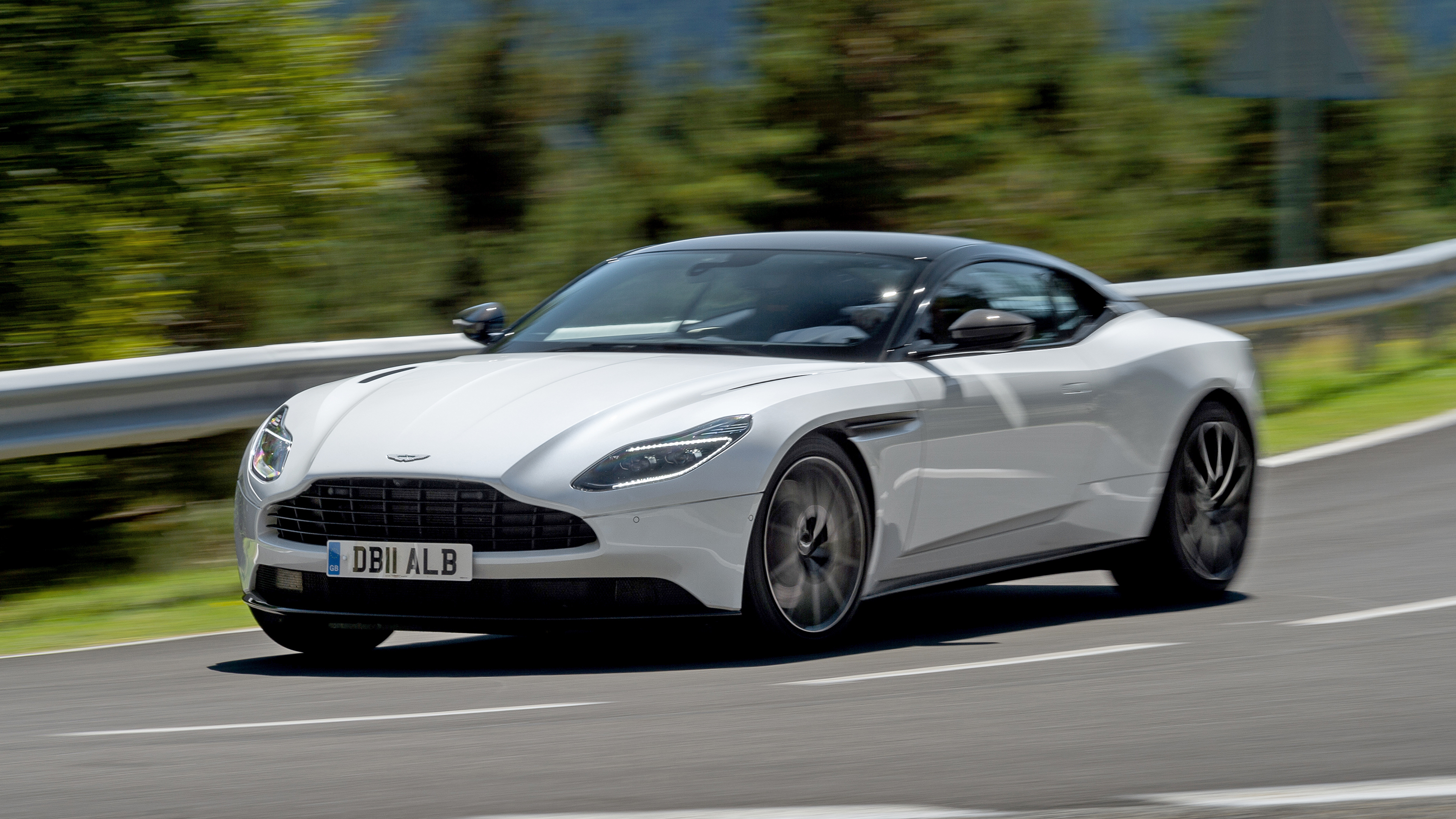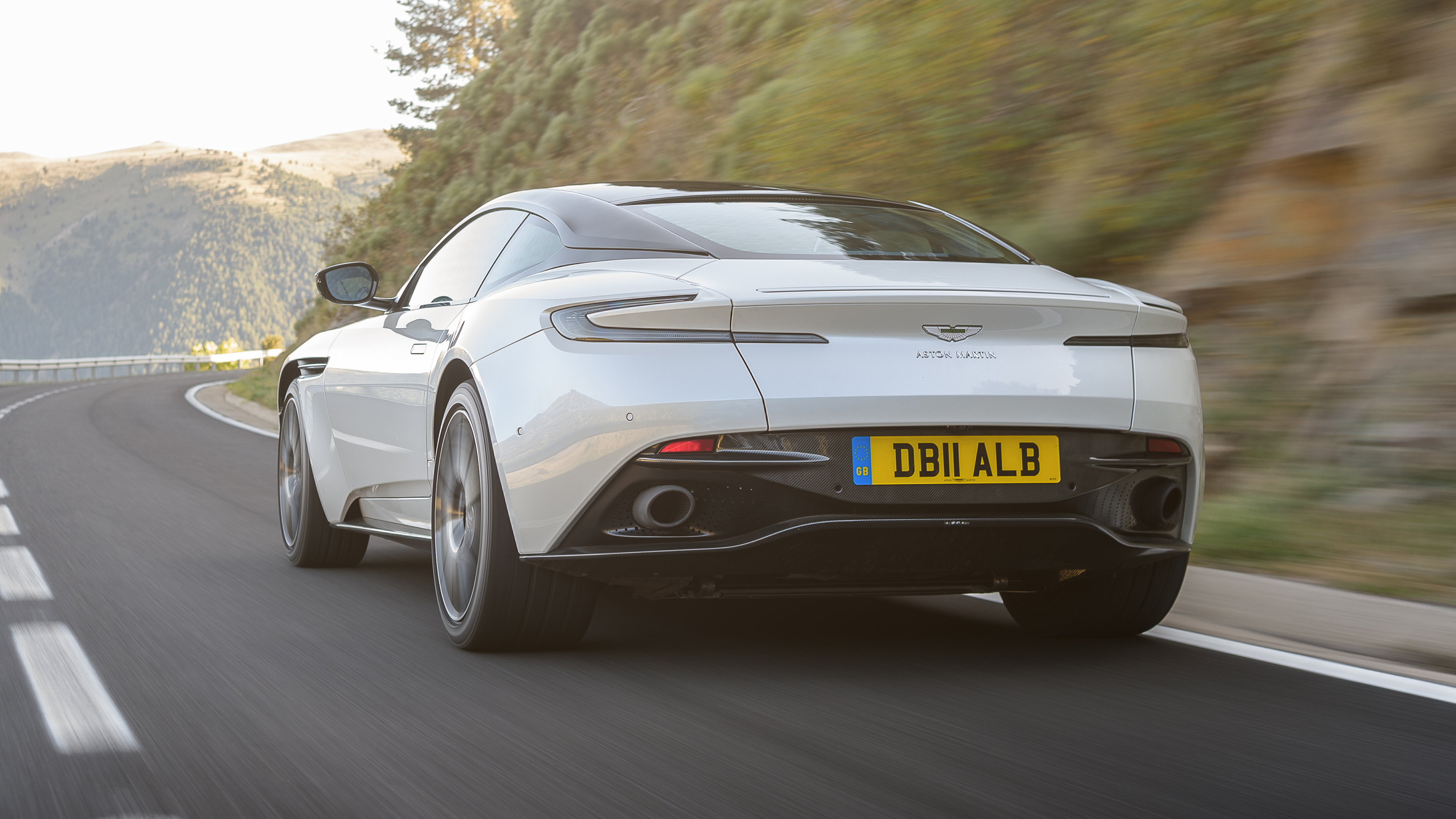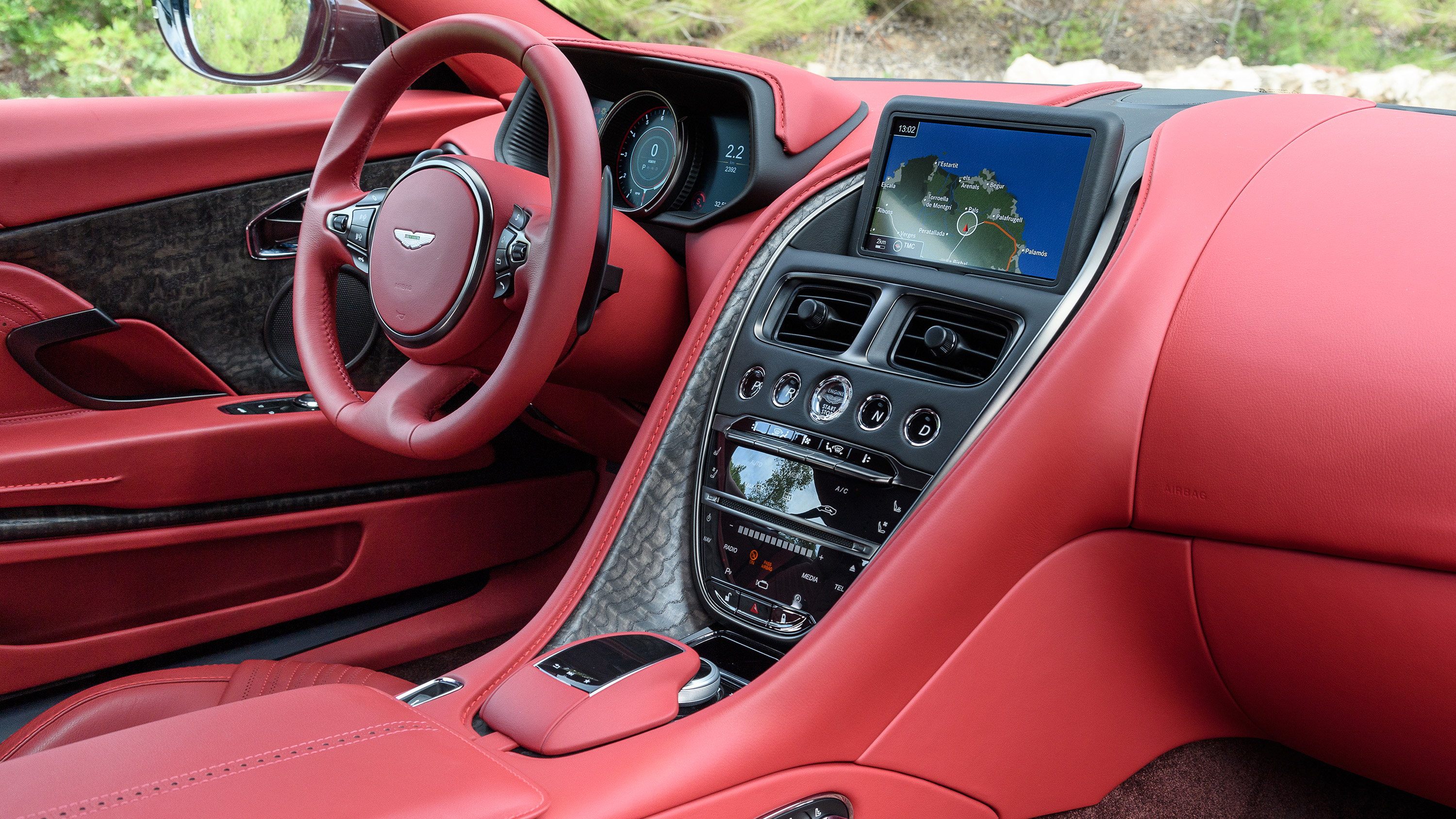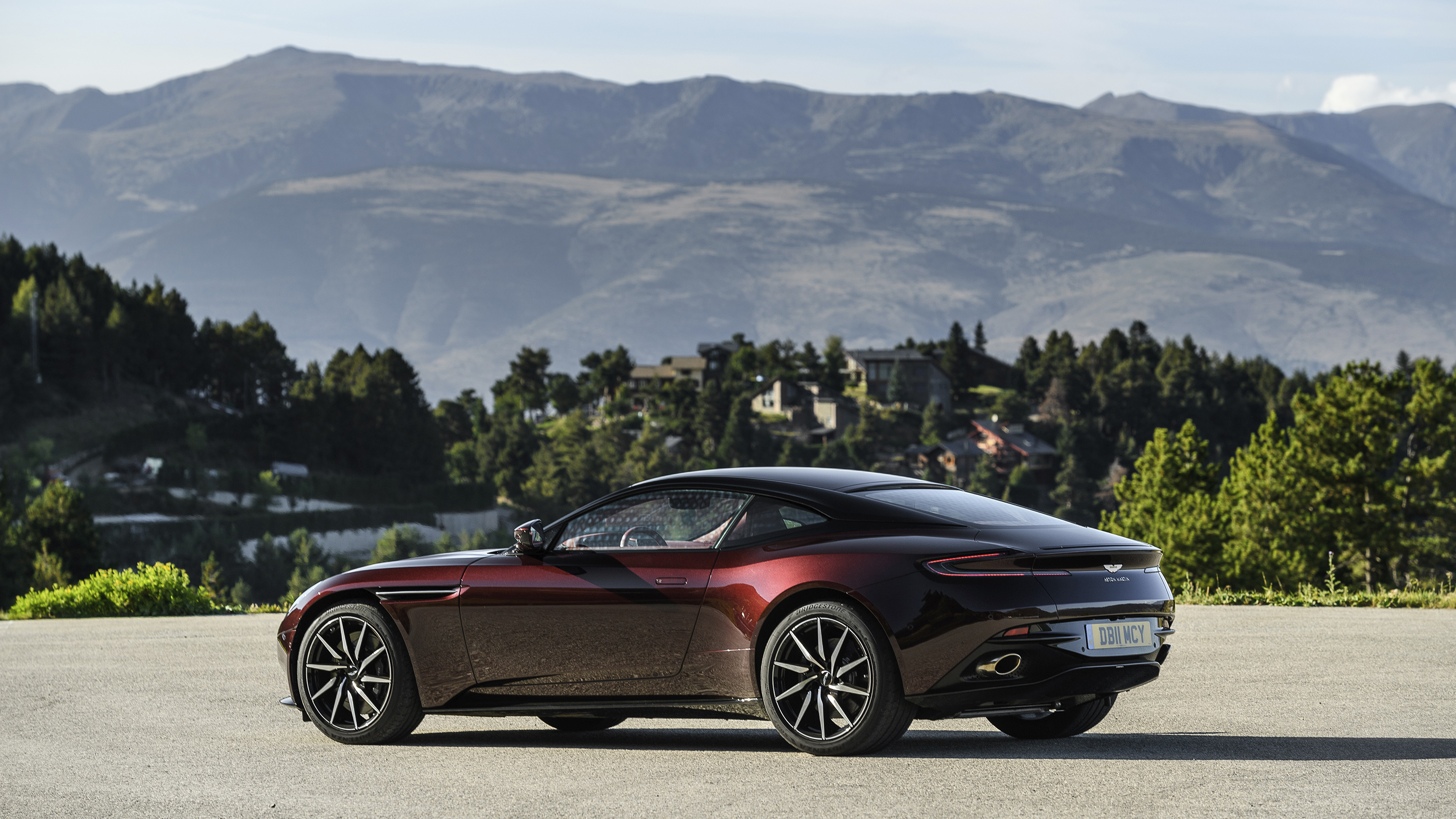
SPEC HIGHLIGHTS
- BHP
503bhp
- 0-62
4s
- CO2
230g/km
- Max Speed
187Mph
- Insurance
groupN
A new Aston Martin DB11?
A new version of the DB11, yes. It uses a V8 engine, effectively making it a cheaper, downsized, more environmentally friendly alternative to the full-fat V12.
Its engine is four litres in size, which in some markets makes it considerably lighter on tax than the 5.2-litre V12. In the UK, the benefits aren’t as crucial, but its £144,900 price tag is still a chunky £13,000 cheaper than the V12’s.
But there’s more to it than money saving: it’s brought a tweak to the DB11’s character, too.
Is it one of Aston’s howling V8s?
Nope. The engine comes from AMG – Aston and Mercedes have an affiliation these days, don’t forget – and is essentially the 4.0-litre twin-turbo V8 you’ll find in the AMG GT sports car, with 503bhp and 498lb ft in this tune.
That’s as much power as the engine used to have in the GT, but Merc has since upgraded that, so the DB11 is pegged down from it a touch. Should help with the politics of giving your bombastic engine to an actual rival…
The key numbers are 0-62mph in four seconds dead and a 187mph top speed, figures which are 0.1sec and 13mph worse than the V12’s, but the V8’s 28.5mpg and 230g/km of CO2 each represent improvements of around 15 per cent.
Aston has tuned the V8 itself, with a new ECU and its own, in-house exhaust system. This DB11 gets the same eight-speed automatic gearbox as the V12 DB11, with the same ratios. But it’s got a new set of paddles, with half as much travel to make them more responsive.
It must be lighter than the V12…
Top Gear
Newsletter
Thank you for subscribing to our newsletter. Look out for your regular round-up of news, reviews and offers in your inbox.
Get all the latest news, reviews and exclusives, direct to your inbox.
A smaller engine means less weight, and the V8 DB11 is a helpful 115kg lighter than the V12, thought it still weighs 1,760kg. But crucially the smaller engine flips the DB11’s weight balance; this one is 51 per cent biased to the rear of the car, rather than 51 per cent to the front in the V12. It’s a small percentage swing in balance, but anyone who voted in the EU referendum will know those can be important.
While Aston has tuned the suspension to deliver the same comfort as the V12, it’s also given the V8 heavier steering, a new stability control tune (a looser one, basically) and more focused damping when you twiddle the DB11 into its sportier driving modes. In short, this is the sports car where the V12 is a proper GT.
And is it a sports car to drive?
The V12 is a calm, well-mannered car that needs exuberant driving or wet weather to bring it alive, while the V8 is involving right from the off. It turns in so much sharper and has a rear axle that’s far keener to get involved on corner exit, something that’s exacerbated by the engine’s fairly thunderous torque delivery.
In the dry this DB11 is wonderfully predictable, and after the stability control has muscled into proceedings a couple of times, you’ll happily loosen it to enjoy a well-balanced and genuinely fun car. In the wet it’s a little spikier, though the electronic nannies’ middling ‘ESP Track’ mode allows you to exploit the car’s natural balance with a safety net. It allows you as much corrective lock as you’d ever want to apply on the road.
The V8 doesn’t feel its 100bhp deficit over the V12, either. Perhaps a straight-line race would expose the cheaper car, but the important thing is how they urge you to drive. The V12’s less frantic demeanour encourages you to sit back and enjoy the luxury of having copious power to spare.
In the V8, I popped everything in Sport mode, locked the gearbox in manual and drove it as hard as the conditions and speed limits allowed me. I think you’ll travel far quicker in the V8 DB11 because of the way it makes you behave. The engine has brought AMG’s hooliganism with it.
So it’s rubbish as a GT now, I assume?
Not at all: this DB11 can still do the GT thing. Keep its handling and drivetrain in their comfort modes and it’s a quiet, refined cruiser. It’s still a very able car at boring long-distance stuff, but I genuinely think it would encourage you to avoid the beaten track every time you drove it. Settle down and keep the gearbox in auto and it’s as stress-free as you’d hope, though.
How’s the noise?
You can compare the V8 and V12 in this video. Aston’s made V8s for yonks, though, so it’s not startling to hear an eight-cylinder soundtrack emanate from the DB11. This one’s a bit different; it’s thunderous like those AMGs, though Aston’s deliberately made it less bassy at low revs. “We didn’t want any criticism that it sounds like an AMG,” says dynamics boss Matt Becker. There’s still shared DNA in the noise, I’d say. But there are few better companies to share performance car DNA with…
There are lots of pops and crackles when you’ve got the DB11’s drivetrain in Sport+, which some may find uncouth, and I found myself sticking with Sport for its more naturally dramatic soundtrack. Pop it into its comfort mode and the engine fades into the background when you’re cruising.
Any downsides?
The engine has downsized, but the DB11 hasn’t. It’s a more playful car on a great piece of road, but you have to bear its width in mind if you’re going to enjoy it to its fullest. The brakes are also the first thing to give on a sustained drive. It may be lighter than before, but there’s still a lot of mass to slow down, and those discs and pads are worked hard.
How can I tell the V8 and V12 apart?
There’s precious little. The V8 debuts new darkened rear lights (as opposed to red ones), but they’ll soon be an option on the V12. There are two bonnet vents compared to the V12’s four. And, understandably, there’s no little ‘V12’ badge on this DB11’s front fender. But it’s some very careful colour coding away from looking exactly the same.
So which one should I buy?
It all depends what you’re after. In Aston’s smaller Vantage, which has had choice of V8 and V12 for nearly a decade, the bigger-engined car has always been the more boisterous of the two. In the DB11, the balance switches. The V8 is the closest a DB-badged coupe has ever got to being a proper sports car.
The end result entwines the tech appeal of modern Astons with the brutish thunder of its Eighties and Nineties coupes. The engine punches hard, sounds angry and gives the rear axle – and you – plenty to do. Buy a DB11 for its GT qualities and that may well be too wearing. Buy it because you want an Aston that’s fun to drive and you’ll fall for the V8. Long before it’s saved you thirteen grand and a few quid on fuel.
Featured

Trending this week
- Car Review
BMW 1 Series








